Reflections on the Invisible Grid, an English Foraging Apron Almanac & Fallen Fruit
Commons Feast Virtual Monthly Meet-up introduction, November 2024
Over the last couple of weeks, I’ve been working on a piece for a group show, Gé zi (格子): The Invisible Grid curated by Taiwanese artist, curator and colleague at the University for the Creative Arts, Cheng-Chu Weng at Five Years Gallery, London. My piece is a foraging almanac in the form of an apron.

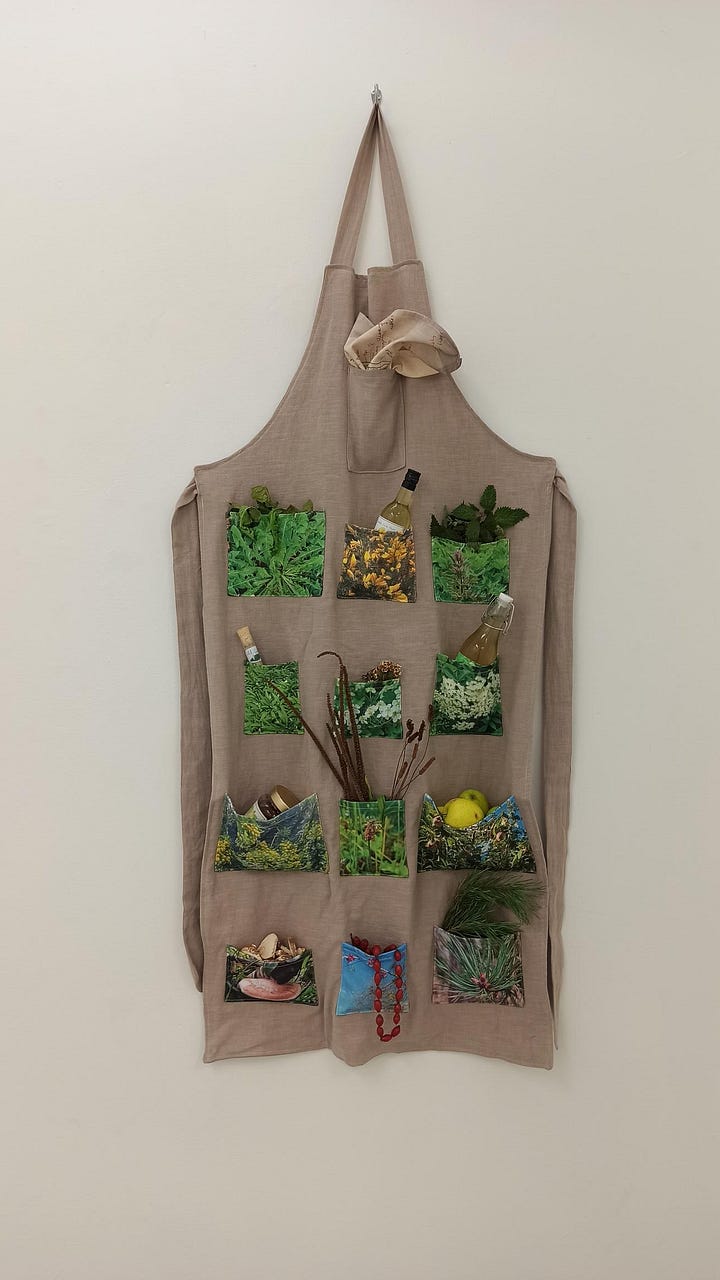
When I started thinking about what I would offer to be part of the show, I was unsure how to respond to the theme. Luckily, a colleague, who was also in the show, pointed out they saw references to grids in many aspects of my work: through seasonality, calendars, growing charts, folded forms, and repetition. I realised that my artist book works, such as Huwawa in the Everyday: An Almanac (2016) make explicit reference to invisible grids through my interest in medieval folding almanacs: their tabular lists of feast days, meteorological forecasts and astronomical data, as well as their folded forms, and their unfolding guide as an approach to life.
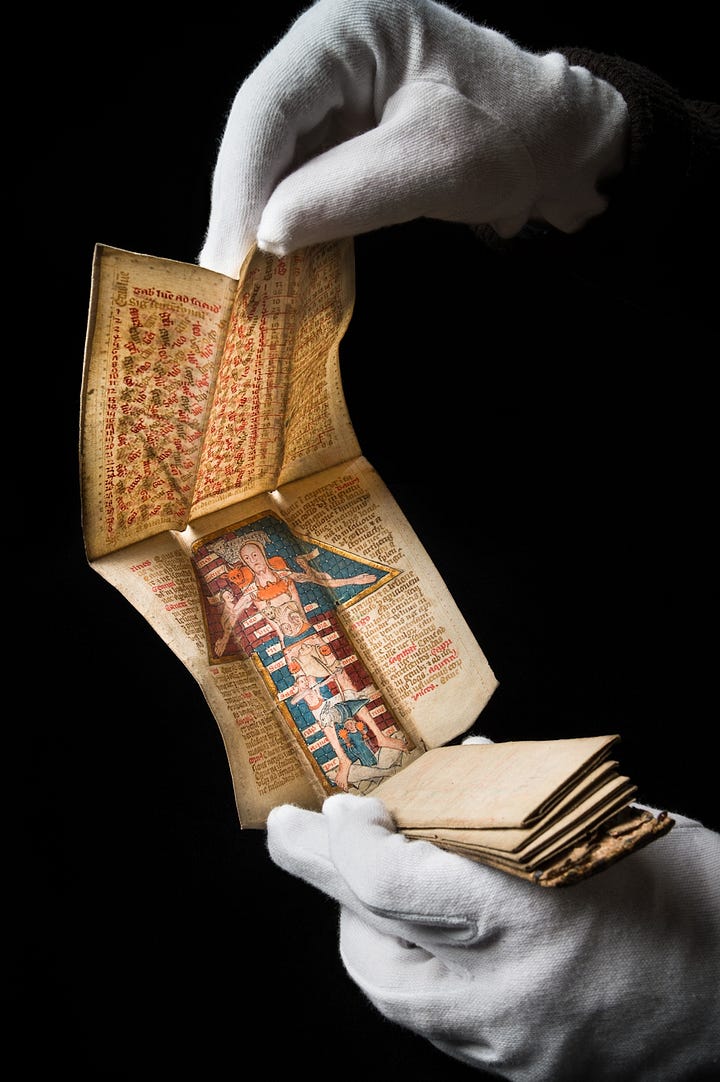
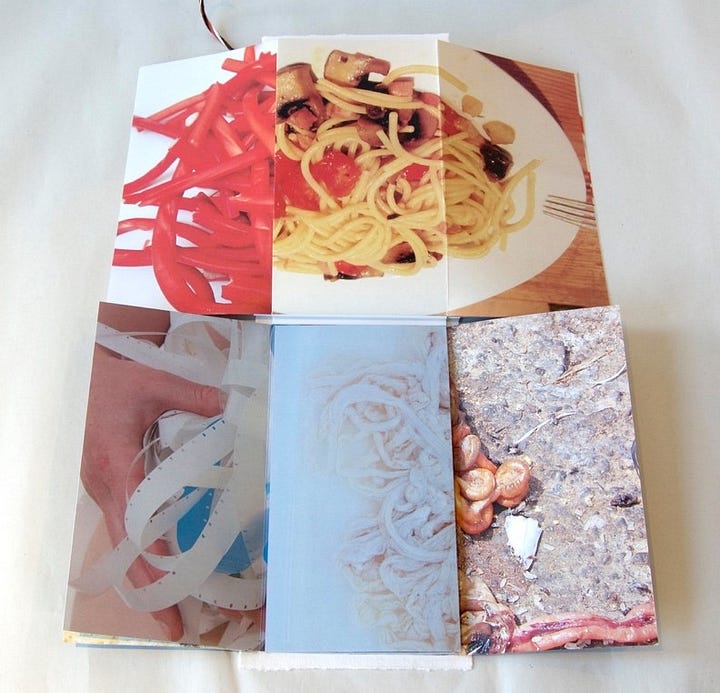
The folded pamphlet form of my recent map/foraging guide made for a student-led curatorial festival, ‘Eat Outside the Box’, also responds to this reference.
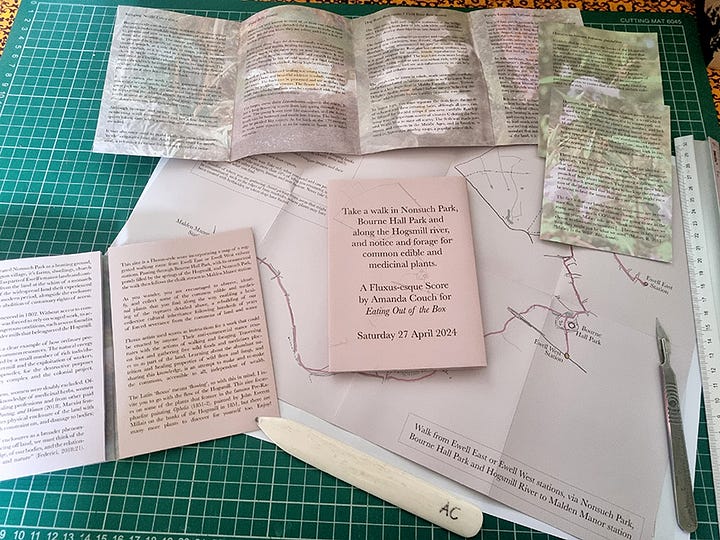
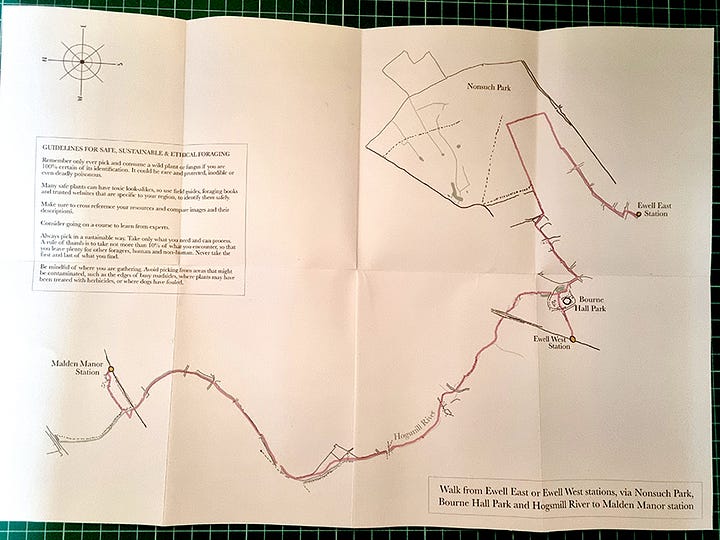
The invisible grid is furthermore present in these Commons Feast Virtual Monthly Meet-Up participatory performances, in the event's cyclical (monthly) nature, and the conversations instigated by witnessing the seasons through foraging, an 'unfolding of life', as well as evident in the grid of Zoom windows, the glimpse into participants' worlds on the screen.
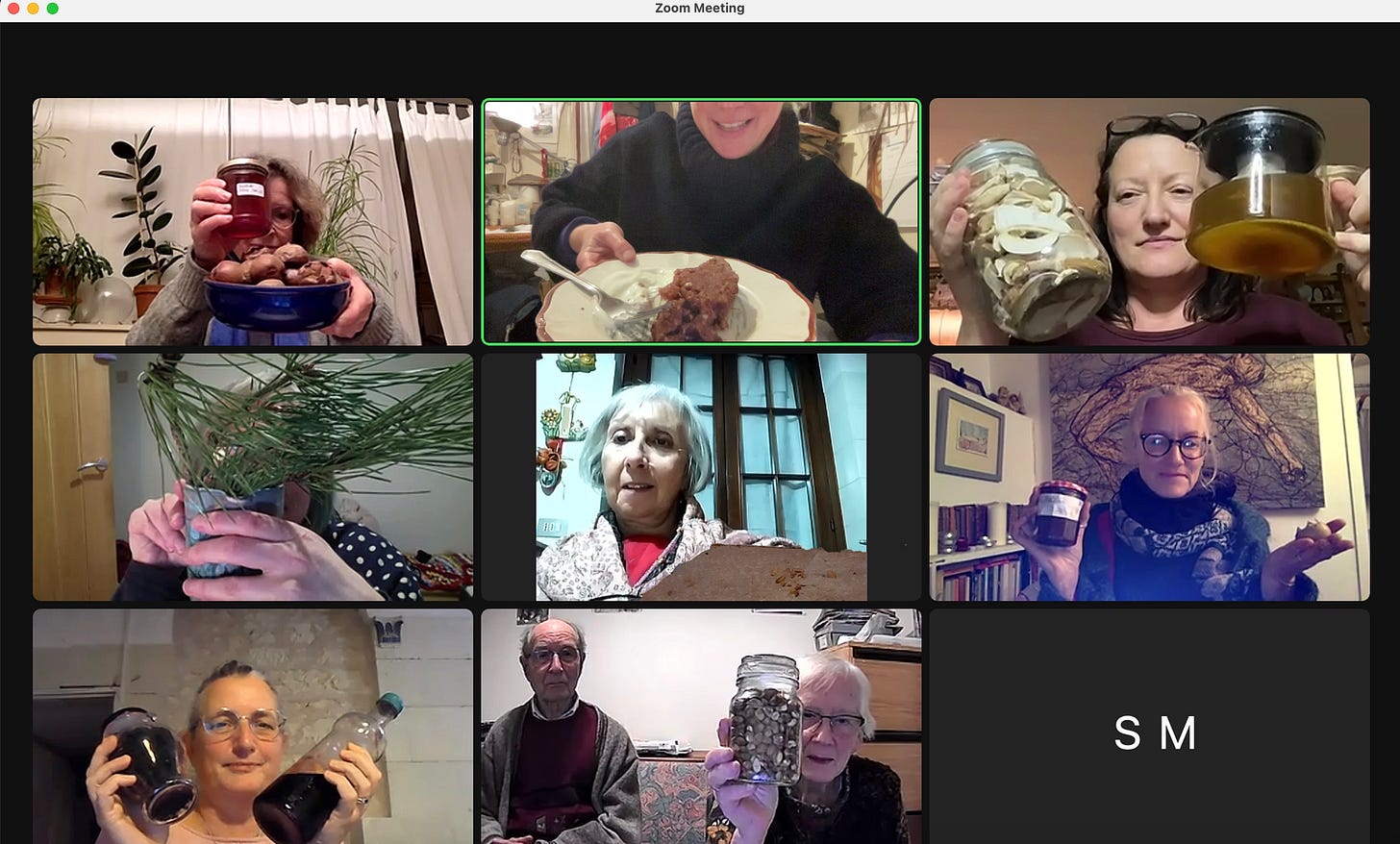
I've wanted to make a foraging apron for some time, so this show became the catalyst, and I set about choosing which wild ingredient would be depicted in each pocket that would loosely relate to the unfolding months of the year. My choices were also based on what I had available to fill the pockets. I chose dandelion for January, a nod to last January’s Commons Feast, where I experimented for the first time with their roots, which are more nutritious in the winter. You can usually find leaves in the mild climate of Southeast England even in the deepest wintry months. Gorse represents February, as this was the first time I learnt that gorse flower was edible, and very much available at this time of year; nettle is March because it is the time of the first flushes of new leaves; April is the best time for wild garlic when the leaves are fully grown; Hawthorn’s other name is May tree; June is the month for elderflower; July offers plums in abundance; August is when many seeds are starting to develop, plantain being one that I regularly gather in this ‘lean’ period. This September the apples were ready, and in mid-October, I found the first magnificent birch polypore specimen of the season; November is when much is starting to die off in the frosts, yet rosehips are still aplenty – red nourishing gems in the hedgerows. Finally, pine is unmistakably Christmassy, and their needles produce more vitamin C in winter.
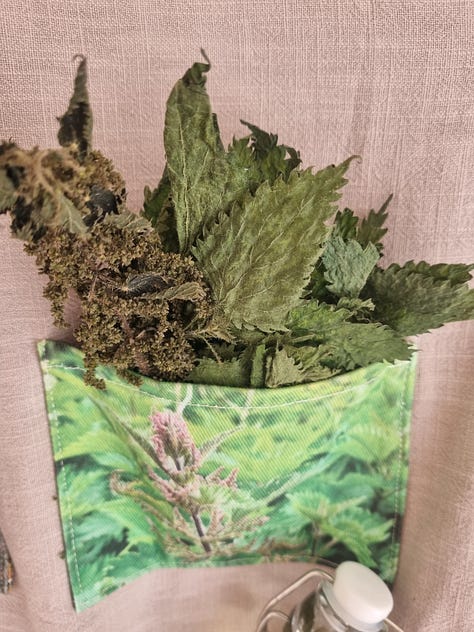
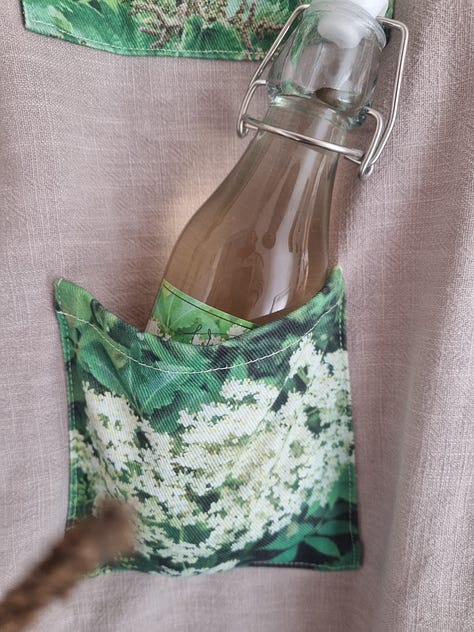
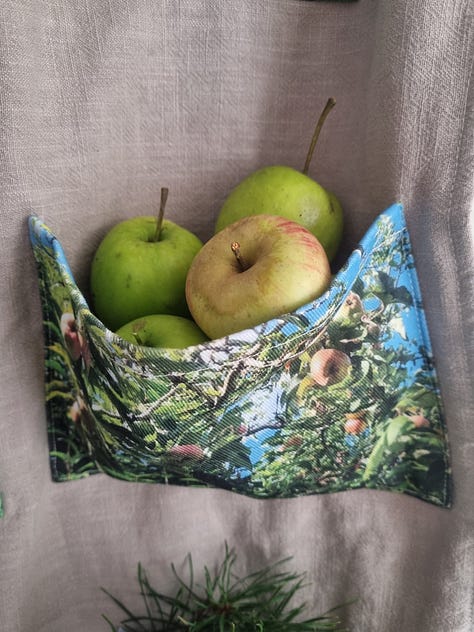
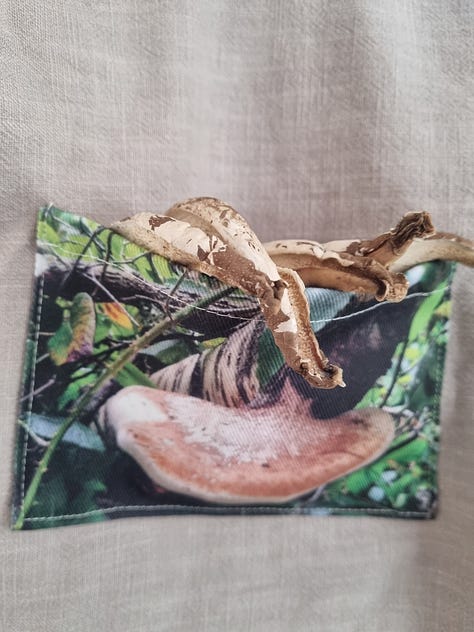
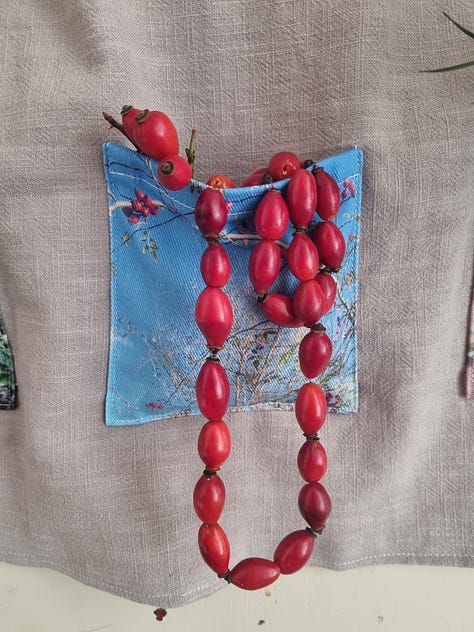
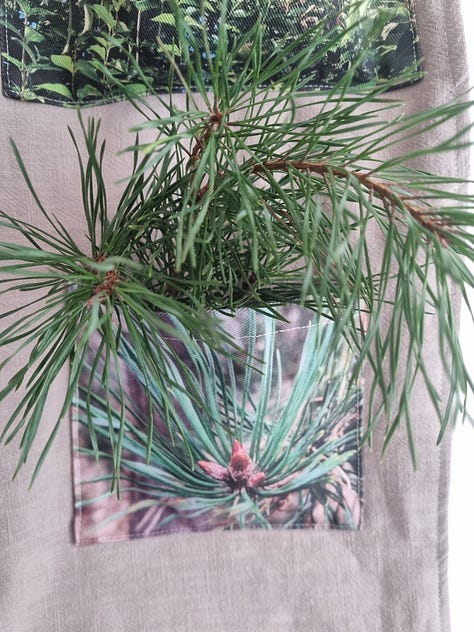
Of course, these monthly pairings, are not set in stone, - the ecological grid is coming undone - unfolded, skewed and screwed up - through human-induced climate change. Plants year after year coming into leaf, flower and fruit increasingly earlier, and growing charts are under revision, due to increases in temperatures and unpredictability and quantities of rainfall.
Thinking through my apron work for the show prompted me to contemplate and share other artworks about foraging, which I am slowly gathering. So today, I will briefly mention, the Los Angeles based collaborative project Fallen Fruit forged in 2004 by artists, David Allen Burns and Austin Young after wandering around their neighbourhood in Silver Lake and noticing the abundance of trees overhanging public streets laden with fruit that was going to waste. They set about surveying and producing hand-drawn maps to identify the locations of the trees and encouraging people to pick the fruit.
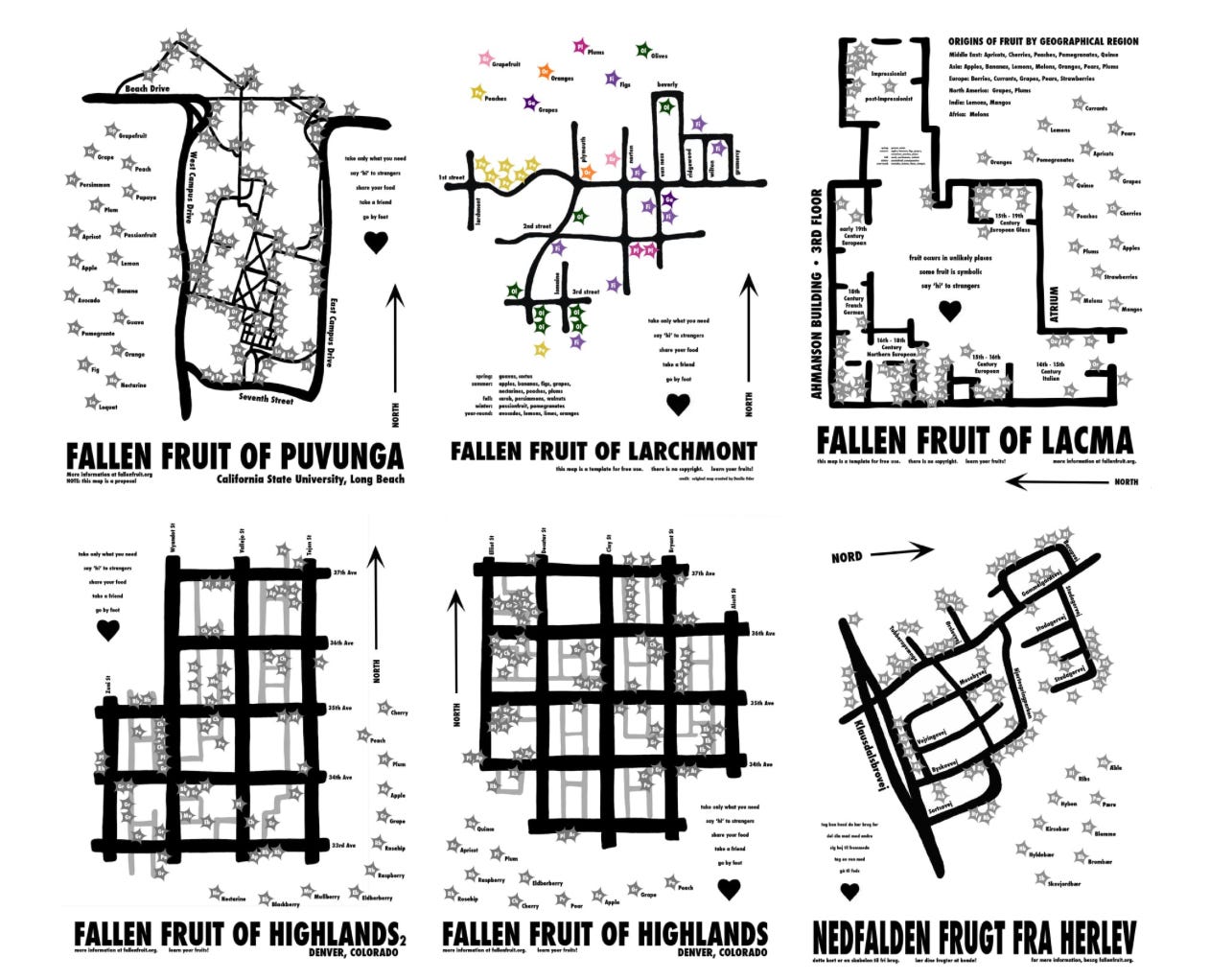
They also employ jam-making as a way of learning how to make collaborative artwork. More recently, they have been planting fruit trees in collaboration with local groups in public spaces, parks, and especially in food deserts to fight food poverty and food waste, and to question how public space is used in cities to support communities.
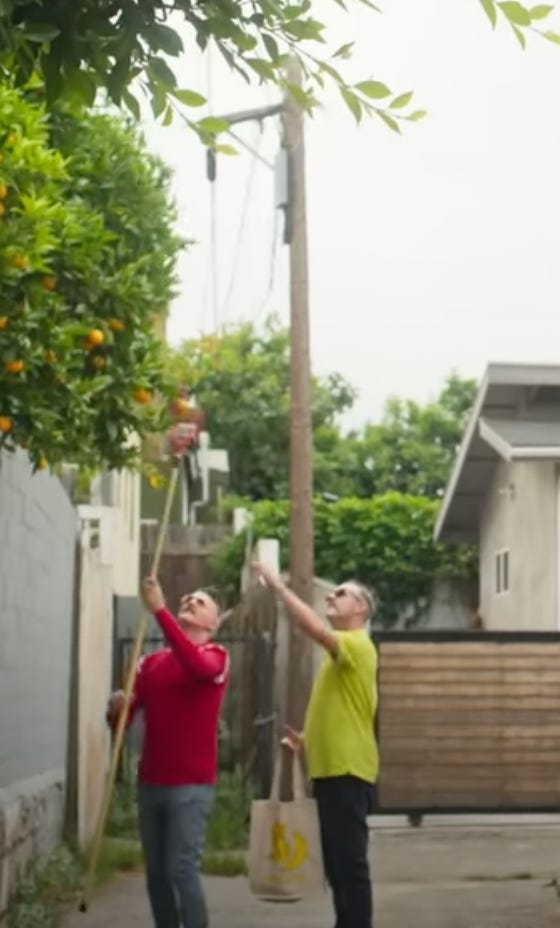
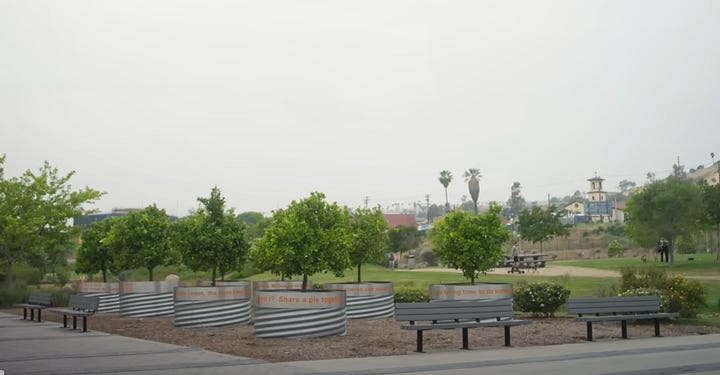
They expanded the project into an interactive global online map, Endless Orchard launched in 2017. It invites users to plot the presence of fruit trees in cities across the world that exist in the margins between public and private space, producing “a network of sharing”: an extension of their now global collaborative practice.
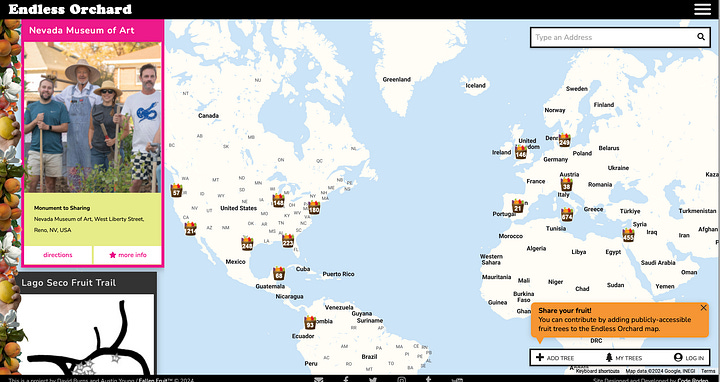
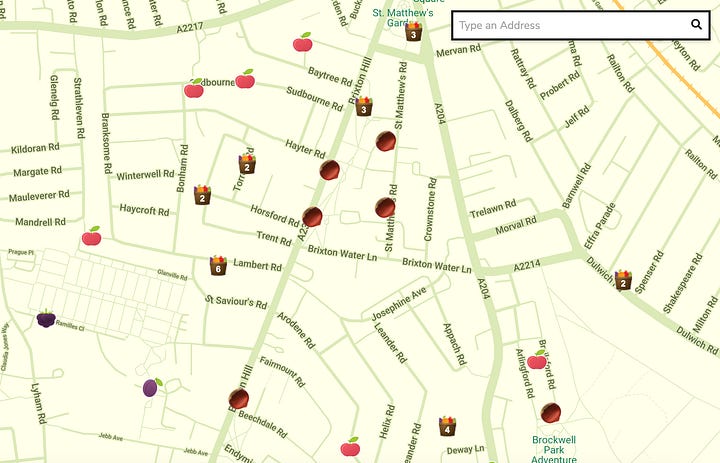
Not only does the name ‘Fallen Fruit’ evoke perished food going to waste on our streets but also conjures the idea of fruit that has fallen out of favour, suggesting a misplaced knowledge of how to eat or prepare fruit for eating and/or the confidence that something is edible if it is not bought from the supermarket, a topic that regularly comes up in the Commons Feast events
‘Fallen fruit’ also connotes issues of morality, calling to mind the Garden of Eden, the fruit in question being the apple, the fruit of knowledge. It also might encapsulate the decline in ethics within food production in our current broken system. Farmer, novelist, poet, essayist, activist, and critic Wendell Berry names us “victims”, “industrial eaters” who are “suffering a kind of cultural amnesia” when we consume without awareness and memory of our connection to the land and the origins of our food (Berry, 2010: 146).
When will we realise that we are ourselves are fallen fruit, having lost our way, having plummeted to the ground? And when will we wake up from our concussion to realise the predicament we are in?
References:
Berry, W. (2010) ‘The Pleasures of Eating’ In: What Are People for? (Berkeley, CA: Counterpoint).
Couch, A. (2022) ‘Divining the world through an artist’s almanac’ In: Wellcome Collection. At: https://wellcomecollection.org/stories/divining-the-world-through-an-artists-almanac (Accessed 23/11/2024).
Fallen Fruit (2024) The Endless Orchard At: https://fallenfruit.org/projects/endlessorchard/ (Accessed 24/08/2020).
Fallen Fruit (2024) The Endless Orchard At: https://endlessorchard.com
Raal A., Nisuma K., Meos A. (2018) ‘Pinus sylvestris L. and other conifers as natural sources of ascorbic acid’. Journal of Pharmacy & Pharmacognosy Research 6 (2): 89–95 https://www.researchgate.net/publication/323249773_Pinus_sylvestris_L_and_other_conifers_as_natural_sources_of_ascorbic_acid (Accessed 18/11/2024).
Wilde, M. (2020) ‘Winter Root Harvest: Dandelion’ In: Wild Food • Wild Medicine • Wild You Substack 12/12/2020 At: https://wildmedicine.substack.com/p/winter-root-harvest-dandelion (Accessed 18/11/2024).

